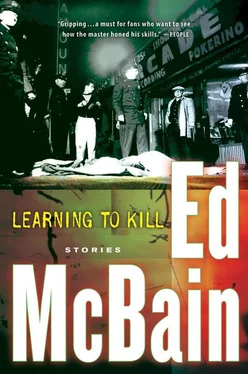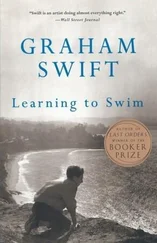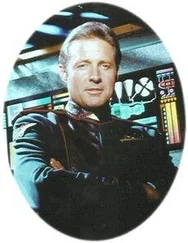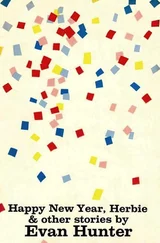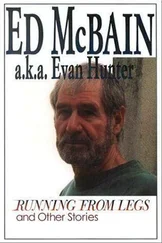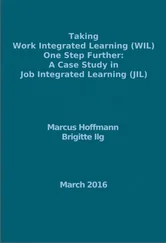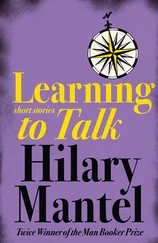“The light on the corner of Main and West Davis turns red at 3:06,” Carl said. “It’s a one-minute light, turning green again at 3:07. It takes two minutes to drive from that corner to the bank driveway. Time: 3:09.”
“I’ve been in the vault for four minutes already,” Anson said. “I figure I can clean it out in six minutes. We’ve practiced stuffing that suitcase already, and I’ve always done it in less than five. But we’ll figure six minutes to play it safe. In other words, at 3:11 I’m ready to leave the vault with the money, and Carl is parked in the driveway at the rear door.”
“And I’m still with the bank guard,” Jeremy said.
“Correct,” Anson replied. “At 3:11, I leave the vault and close the door. The manager is still inside. If he starts yelling, no one’s going to hear him through that thick steel. So we don’t have to worry about the manager after 3:11. I walk to my left and to the rear door. It’s approximately ten feet to that door. I open it, step into the rear of the car, and Carl pulls out of the driveway. It shouldn’t take us longer than a minute to clear the driveway and turn toward the front of the bank. We’ll play it safe. Give us two minutes from the time I leave the vault to the time the car will be waiting for you at the front of the bank, Jerry. In other words: 3:13.”
“That’s the part that bothers me,” Jeremy said. “I don’t like leaving last.”
“There’s nothing to worry about,” Anson said. “At 3:13 by the bank’s clock, you tell the guard to open the door. You walk out and down to the car. It’ll take you twenty seconds to cross the sidewalk to the car. It’ll take the guard at least thirty seconds to get over his shock and open those doors again. That gives us a ten-second start. By that time, we’re around the corner and away. We’ll be on the highway before the cops even know about this. The guard’ll probably rush out and start yelling and then remember he ought to pull the alarm. That’s all the lead we’ll need.”
“I don’t like leaving last,” Jeremy said.
“Why not? I’m the only one who’ll be carrying any money,” Anson said. “When you leave, you’ll look just like any other depositor who got caught inside when the doors closed. You’re not allowed to park in front of the bank, which means there’ll be a space for our car guaranteed. We’ll be in it just as you come out of the bank. Believe me, we can’t miss.”
“I hope so,” Jeremy said, blinking.
On Thursday, the fourteenth, the sun rose over the town and splashed the streets with gold. There was a pale blue sky behind the sun, and the natives of the town talked about spring coming early this year. It was a warm sun, and it dispelled harsh thoughts of winter, and the people of the town responded to the sun and quickened their steps, and walked with the collars of their coats open, walked with their heads high. It was good to be alive on a day like this. The people in the bank, the tellers, the clerks, the manager, the guard looked through the glass entrance doors and up at the high windows on the walls, seeing the golden splash of the sun and wishing for their lunch hours so they could get outside and soak up some fresh air.
The three men ate lunch in a diner. They did not sit together. They did not talk to each other. They ate their lunches quietly and then separately went back to their furnished room to prepare for the business that lay ahead of them.
Anson was in a holiday mood. He took the theatrical makeup kit from the bottom drawer of the dresser, and then he went to the closet for the suitcase bearing the wigs, and there was a perky spring in his step, and a smile on his face.
“It isn’t enough to be merely unrecognizable,” Anson said, like a professor delivering a lecture to his students. “To begin with, we can’t wear masks because we’re allegedly just customers entering the bank. We have to look like normal, everyday people.” He tapped the makeup kit. “That’s the beauty of this.”
“I’ll feel strange,” Jeremy said.
“Of course you will,” Anson replied. “But when the time comes for descriptions, you’ll feel a whole lot better. Come on, let’s get started.”
They began with the spirit gum. Carl had a pug nose, but he sat before the mirror and diligently wadded spirit gum onto it until the nose took a definite downward curve. Jeremy used a heavy hand with the gum, adding to his own slender, feminine nose until the nose was gross and wide. Anson built a hook into the center of his nose, so that the nose appeared to have been broken at one time. They tinted the spirit gum to match the color of their complexions, and then they started with the theatrical hair. Carefully, painstakingly, they snipped patches of hair from the long strands they held in their hands. Carl built up his eyebrows so that they were shaggy and unkempt. Anson, bit by careful bit, built a red mustache under his false broken nose. Jeremy put a hairline mustache under his.
They powdered their noses to take the shine of the makeup off them, and then they took the wigs out of the suitcase. Anson put the red wig over his own wild black hair. Jeremy, in character with the thin mustache, donned a black wig and then plastered the hair down with petroleum jelly. Carl put on a shaggy wig which matched his eyebrows. They glued the wigs tight at their temples, combing the hair so that it fell naturally. The time was 1:30.
At 1:32, the International Armored Car Corp. truck pulled up at the offices of American Steel and two armed guards transported the payroll into the steel-plated truck. At 1:35, the The Big Day truck from the Safeguard Company arrived at Tartogue Aircraft to pick up its payroll load.
At 1:37, Anson Grubb said, “You’d better hurry, Carl.”
“I’m hurrying,” Carl answered. He was wearing a pale yellow sports shirt, and he stood before the mirror now, knotting a tie. He did not put either a sports jacket or a suit jacket over the shirt He wore, instead, a red plaid lumber jacket. The other men would follow the same sartorial plan. Over the lumber jackets would go overcoats. Once they were in the car and away from the bank after the holdup, the overcoats, the wigs, the false hair and the built-up noses, the neckties, all would be dumped into a suitcase in the backseat of the car. Anyone who’d seen them in the bank would remember men in overcoats, wearing neckties. Once they left that bank, their physical appearances would be completely changed. The three men in the car would be wearing lumber jackets and sports shirts. They would be of different hair coloring than the men who’d robbed the bank. Their faces would look different. They would all be clean shaven, whereas the two men who’d robbed the bank had worn mustaches. Only the driver of the car — if anyone happened to see him — had sported a hairless face.
But the escape precautions did not end at this point. Three men traveling alone, no matter what their description, would certainly be suspect after a bank had been looted by three strangers. Two drop-off points had been marked along the escape route. Jeremy would be dropped off first, carrying the suitcase with the overcoats and the rest of the junk. He would run around to the back of the car and — in the event anyone had caught the license number as they’d driven from the bank — he would take off the phony plate that was taped onto the car’s original plate.
Anson would be dropped off two miles later, carrying the suitcase with the money, and also carrying Carl’s gun as well as his own. If Carl were stopped after the two men had been dropped off, he’d be clean as a whistle. He was unarmed. There was no loot in the car. There was nothing in the car which could tie him to the holdup. There was no reason to assume he would be stopped, but if he were, he would be a workman in a lumber jacket, returning to the city after a hard day. A rendezvous point, some thousand miles and two weeks away, had been arranged. It looked perfect.
Читать дальше
